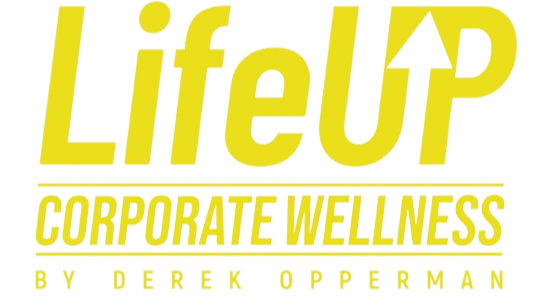
From hula hoops in the ’50s to 1990’s Boxflex and Thighmaster to early 21st-century digital health offerings like WebMD Symptom Checker, health-related technologies have taken a giant leap forward. More recent technology enables your company to take a more holistic approach toward health using wearable devices, smartphone apps, and wellness hubs. And such transformational healthcare access and delivery technologies are likely in your workplace right now. Employees are already managing chronic health conditions and getting fitter by tracking, diagnosing, and managing their lives to improve their overarching health and wellbeing – the whole shebang on a bracelet or smartphone. Let’s explore…
Who would have thought ten years ago that we could track fitness and control health data from our wrists or phones? But Fitbit, Apple Watch, Garmin and a slew of smartphone apps have made this possible. How do they impact your organization’s health?
- Your people may not all have a grasp on how their daily decisions impact their wellbeing. For instance, we tend to overestimate our daily energy output and underestimate the calories we consume. Wearable devices and smartphone apps help us to be more mindful of our choices.
- Wearable digital measuring devices enable employees to track vital signs in real-time – even transmit them to their health providers and add them to electronic health records. These measuring devices can also measure body fat and scan carotid arteries, among other tasks, and even use 3D imaging to analyze movement. Monitoring technologies can identify risks and monitor existing health issues so that employees can manage health proactively.
- Smartphone doctor visits save time and increase convenience. Your employees can even measure pharma-genetic markers to gauge the effectiveness of medications.
- Apps help to manage social interactions, financial wellness, and mental health.
- Company wellness platforms like Wellness 360, Starling, and Sprout, among many others, promote employee health, help minimize medical costs, engage employees in their own fitness and mental wellbeing, and, ultimately, boost productivity. Many platforms integrate with wearable devices and smartphone apps.
And as these digital fitness technologies advance, older technologies become cheaper and easier to get.
So, what is an employee wellness hub?
Simply put, an employee wellness hub is a repository that everyone can access. Having one demonstrates your company’s wellness bona fides and your care for your employees. And it streamlines communications related to health and wellness.
Your employee wellness hub brings together all your health initiatives in a central online location where your people can access wellbeing resources, health advice, and downloads – sometimes even health-related services.
Some companies use their online wellness hub to offer online exercise, yoga, and mindfulness sessions, as well as interactive groups like singing and kayaking clubs. Others take pride in showcasing their wellbeing initiatives, such as “Summer Fridays off” or online social groups. You can also beef up your employee wellness hub with offerings from health-related partners, like online health coaching, GP consultation services, or mental health therapy. Taken together, these features create a holistic health and wellness approach that your people can access quickly and easily from their desktop computers, laptops, or smartphones.
O.C. Tanner’s 2022 Global Culture Report reveals that today’s employees don’t want to be cubicle-bound. They prefer to work from a wider range of physical spaces that involve remote work. This especially relates to your caregiving population, (mainly Millennials and Gen-Xers), who prefer to integrate work with the demands of life. Your wellness platform and employee electronic devices help to keep them engaged as they access real-time coaching and education.
Fitting the pieces together
More and more companies seek to adopt a variety of niche digital health solutions. This enables them to give employees personalized recommendations and relevant health-related resources. Getting these varied niche solutions working together like a well-oiled machine can be quite a trick though!
Many companies lack access to professional wellness staff, so they contract out their health-related initiatives. Wellness hubs enable contractors to move things along smoothly and access the data they need to fast-track programming that fits the needs of their communities.
In addition:
- It decreases the employers’ administrative burdens.
- Centralizes data and resources.
- Provides your population with an easier, more streamlined means of communication.
Is digital wellness worth the cost?
You may wonder about the value of using digital health solutions to mitigate major cost drivers for your company, like obesity and diabetes. Traditionally, you might use return on investment (ROI) to determine whether a new wellness program or equipment is worth it. But here’s the thing, companies never realize a positive ROI in the first year or two. A wellness program is more like a marathon than a sprint, though it can reap significant financial rewards over the long term. But it can be a challenge to quantify ROI, because of the intangibles that can prevent precise calculations, such as existing health conditions, health-related absenteeism, employee engagement, and overall job satisfaction. It’s why many companies turn to an alternative method to measure corporate wellness program success: value on investment (VOI). In this model, companies see wellness benefits as an investment rather than a cost. To get a more holistic and broader view of your workforce health, you need to consider several key measures of value when you adopt a digital technology solution:
- Have you decreased the corporate spend per employee (direct medical cost savings)?
- Does the digital technology solution help prevent conditions that will require medical spending down the line?
- Has productivity increased as presenteeism or lost workdays decreased? Are employees meeting more deadlines?
- Have long and short-term disability claims decreased?
- Has the program/service/equipment helped the company attract and/or retain talent?
If we build it, will they come?
To build a digital wellness program the right way, your company needs successful enrollment (around 30%) and consistent engagement over time. Obviously, without these, your best-laid plans for digital health solutions are simply bells and whistles. And many companies’ digital technology offerings only garner a 5-10% employee enrollment rate. But why would you invest in a solution that 95% of your employees never even see? Simply stated, the more participants you can enroll, the more successful your initiative will be. So, it goes without saying that your rollout needs to be robust and far-reaching. That way, you’ll enroll (at least some) of your higher-risk, higher-cost population.
Step two after getting your employees’ attention is to make sure they’re consistently engaged. All right, you may not achieve Facebook or Instagram levels of engagement, but you need to make sure your enrolled employees are regularly involved in the program. Here are a few ways to ensure they are:
- Listen to your people
Making your digital wellness program relevant and participation-worthy means getting input from your employees from the outset. Ask them what they want and need. Then do your best to provide it. You may not be able to please everyone, but take note of common themes, rather than specific ideas, and then your digital wellness program can appeal to the largest swath of employees. Base your tech selections on your employees’ main goals, whether these be stress management, nutrition, fitness, or individualized biometric data. - Communicate, communicate, communicate
Weekly or even daily reminders of your wellness offerings, fitness challenges, incentives, and relevant health content will remind employees of all the good things they can gain from participating. Use multiple channels of communication. - Recruit health ambassadors
Identify enthusiastic volunteers to engage your workforce, plan events, provide feedback, encourage participation, and identify wellbeing challenges. - Nurture the culture
It’s all very well to replace doughnuts with healthy potlucks and online recipe swaps but remember that leadership and management need to be passionately engaged in workplace wellness initiatives. Your employees will follow your true north.
So, are you ready to embrace digital health at your workplace?

